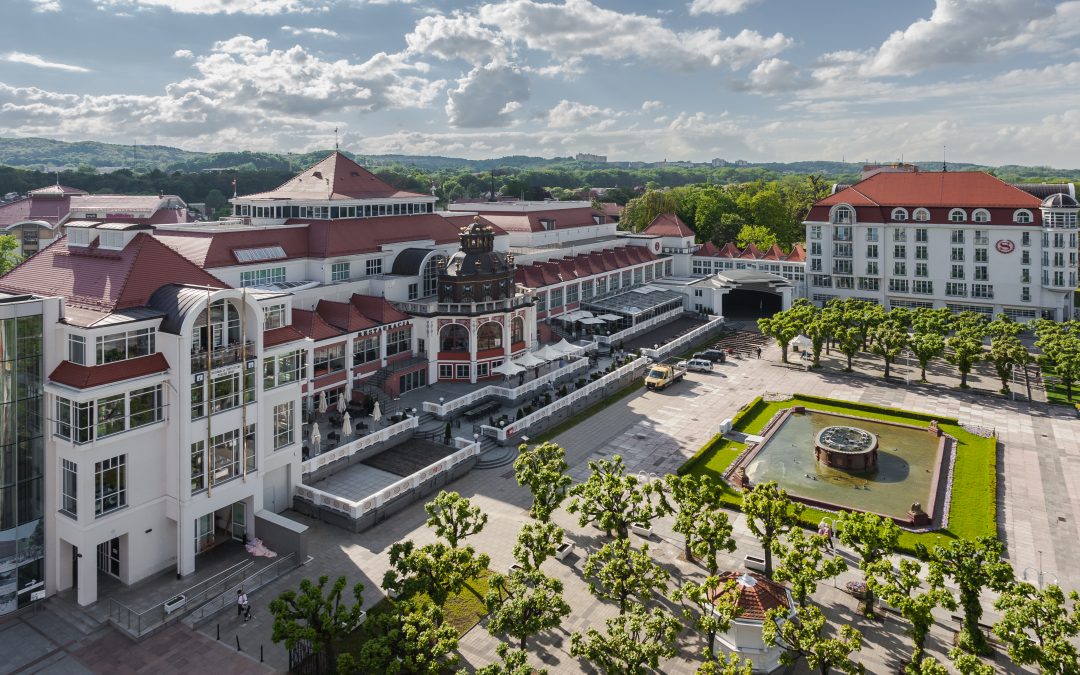Sopot, one of Poland’s most popular coastal resorts, has removed the last of its billboards in a four-year-long effort to beautify its streets.
The proliferation of advertising in public spaces has long been a controversial issue around Poland, with many referring to it as “reklamoza” (“advertosis”), likening it to a disease eroding the fabric of Polish cities.
Okolica jednego z najważniejszych zabytków w Olsztynie, Wysokiej Bramy. Wkoło banery, szyldy,plakaty – brzydkie reklamy różnego rodzaju. Budynek z wielkimi szmatami to c.h."Jakub". Jest to główne wejście na stare miasto. Niżej porównanie jak było kiedyś. #baneroza #reklamoza pic.twitter.com/yEzwczkZFs
— kuba (@Mosak22) August 8, 2020
In 2018, Sopot – which boasts Europe’s longest wooden pier – became one of the first municipalities in the country to enact a landscape regulation aimed at limiting the number of billboards and other advertising displays.
“To this day, more than 1,000 adverts have disappeared from Sopot’s public spaces,” wrote the local authorities this week, as they announced that the last billboard had been removed. A series of images showed how streets looked before and after billboards were taken down.
Out of 2,500 municipalities in Poland, only 44 have introduced regulations on their visual landscapes since being empowered to do so in 2015, reported the Dziennik Gazeta Prawna daily last November, citing data from the development ministry. A further 175 had begun to take steps to introduce such rules.
Poland’s capital Warsaw adopted such a resolution in January 2020, but it was later repealed in its entirety by the governor of the province in which the city is located.
The fight against unwanted advertisements has gone more smoothly in the southern city of Kraków, a famous tourist destination. From the day its resolution came into force in July 2020 to November last year, 449 decisions were issued imposing fines amounting to over 3.2 million zloty (€680,000).
Meanwhile, Sopot authorities, rejoicing in their success, are eyeing further changes.
“I am extremely pleased with the rediscovery of Aleja Niepodległości [Independence Avenue], the main thoroughfare of our city, and the fact that we can see historic buildings instead of the advertising being displayed on them,” said deputy mayor Marcin Skwierawski, quoted by Radio Gdańsk.
The city is now focusing on unifying the visual identity of signage and removing minor boards and digital advertising displays, reports the local broadcaster.
One of the main priorities of the city is cleaning up spaces in the historic centre, especially in the area of the picturesque Monte Cassino Street, known for its clubs, restaurants and a crooked house.
The Krzywy Domek or Crooked House in Sopot, Poland, which was designed as an homage to Polish children's book illustrator Jan Marcin Szancer pic.twitter.com/SciMqYncKT
— Alexa Fån Clicks 🦋 (@FanClicks_) March 5, 2019
Main image credit: Diego Delso/Wikimedia Commons (under CC BY-SA 4.0)

Alicja Ptak is deputy editor-in-chief of Notes from Poland and a multimedia journalist. She has written for Clean Energy Wire and The Times, and she hosts her own podcast, The Warsaw Wire, on Poland’s economy and energy sector. She previously worked for Reuters.




















